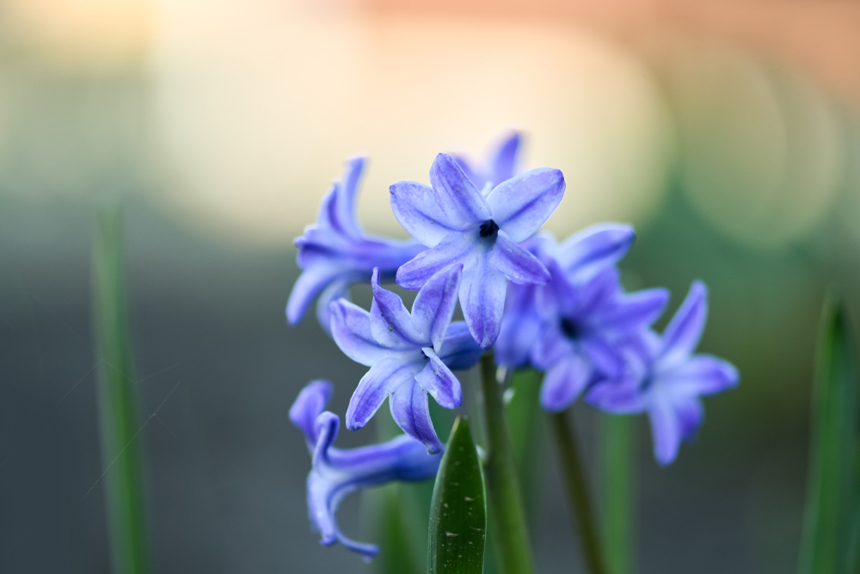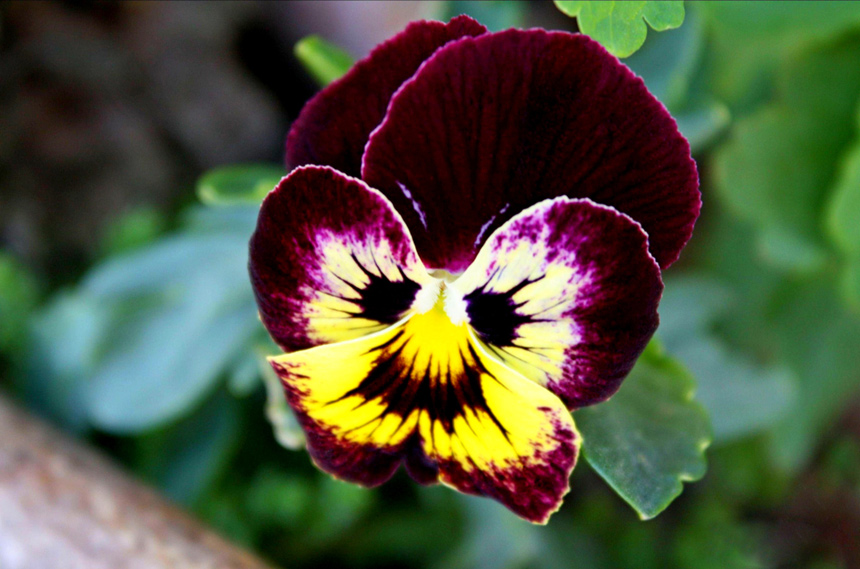In a Word: An Anthology of Spring Flowers
Managing editor and logophile Andy Hollandbeck reveals the sometimes surprising roots of common English words and phrases. Remember: Etymology tells us where a word comes from, but not what it means today.
The warming spring means Mother Nature is bursting with new color from buds and blooms. Many of these flowering plants get their names from pretty unremarkable sources. For example, some were named after people, like the magnolia (after French botanist Pierre Magnol), freesia (German physician Friedrich H.T. Freese), and forsythia (British botanist William Forsyth). Others were named simply for the way they look: Bluebells, for example, are so called because their blooms are blue and bell-shaped.
But many of the flowers you’ll see this spring bear names of more surprising origins, some that go back millennia. Read on for a short anthology of the stories behind the names of some of the plants you might see blooming this spring.
Why an anthology? The word comes from Greek roots that mean “flower gathering.”
Daffodil
The Middle English affodill stretches back to the Greek asphodelos, a flower said to bloom eternally in the Elysian Fields, where the blessed reside after death in ancient Greek myth. Exactly where the word asphodelos came from, no one is sure.
During the 16th century, daffodil bulbs came to Britain from the Netherlands, and the flower likely got its modern name from the contraction of the Dutch de affodil.
Hyacinth
In ancient Greece, hyakinthos was the name of both a blue gemstone and a purple or red flower — though we’re not sure exactly which one. The creation of the flower, though, is explained in Greek mythology: Hyakinthos (or Hyacinthus) was a Spartan prince who was much loved by the god Apollo. One day, the two were throwing the discus around. Apollo gave it a really hard throw, and Hyakinthos, laughing, chased after it, but the discus struck him in the head and killed him. To honor him, a distraught Apollo caused a flower — the hyacinth —to spring up from the boy’s blood.
In another version of the story, the death isn’t accidental: Zephyr, the west wind, was also quite fond of Hyakinthos. In this story, he was jealous of Apollo’s relationship with the boy, and so Zephyr intentionally blew the discus off course, causing it to strike Hyakinthos in the head.
Hyakinthos entered Latin as hyacinthus, but in Medieval Latin became jacintus, and in Old French jacinte — which gave us the name of the reddish-orange gem called jacinth. But in the mid-16th century, the word was “re-Greeked” to become hyacinth for the name of the flower. However, the flower we call hyacinth today very likely not to be the same flower the ancient Greeks called hyakinthos.

Pansy
At the end of Act IV of Hamlet, Ophelia, who is losing her mind, comes in singing and handing out various plants she has collected outdoors: “There’s rosemary, that’s for remembrance; pray you, love, remember: and there is pansies, that’s for thoughts,” she says. Shakespeare’s connecting pansies and thoughts isn’t capricious; the word pansy comes from the French word for “thought,” pensée.
In Victorian England, where public displays of affection were taboo, pansies were exchanged as a secret sign of attraction. A young man might sneak a pansy in to a woman to indicate that he is thinking of her — in a romantic way. Some types of pansies are also called heart’s ease or love-in-idleness, calling to mind the idea of a young man pining away with thoughts of his love.
In German, on the other hand, the pansy is called Stiefmütterchen, meaning “little stepmother.”

Peony
People have long recognized the medicinal value of the peony and have used its roots, flowers, and seeds to ease pain. It made sense, then, to name the plant after the physician of the gods, Paean (or Paieon or Paion). Does it seem odd that the supposedly immortal and impervious Greek gods would need a physician? While your average human is no threat to the deities, they do occasionally injure one another. In the Iliad, Ares is wounded by the mortal Diomedes — with Athena’s help — and Paean is called upon to salve his divine wounds.
From this root came the Old North French name pione, which in the 16th century merged with the Middle English pyony to become the modern peony.
Tulip
Many of these flowering plant names come from Greek mythology. Tulips, both the flower and the name, come from the Mediterranean too, but a little farther east. This favorite flower of the Netherlands was introduced into Europe from Turkey, and it takes its name from the (Latinized) Turkish word for “turban,” tülbent, because of the flower’s resemblance to the headdress.
In Latin, the flower became tulipa. The word kept its full form when it entered Spanish (tulipan) and Italian (tulipano), but in English, the -an was dropped, probably under the assumption that it was a suffix, and so today we tiptoe through the tulips.

Everlasting Flowers
“The earth laughs in flowers.” Ralph Waldo Emerson
Flowers are out in full force in late summer and fall, and this is the perfect time to preserve some of that color and beauty to brighten your home in winter.
Drying flowers is easy and inexpensive, requiring just a little know-how. The trick is to cut flowers at the right time of day, late enough in the morning so that the dew has evaporated, but before the blossoms become wilted by the sun. Pick immature blossoms for the best results. If cut at their peak of perfection, flowers will open farther during the drying process and leave you with a less than perfect result. For dried bouquets, however, you may want to pick flowers ranging from buds to nearly fully opened blossoms.
Once flowers are cut, to prevent fading, remove them from the sunlight. Gather in bunches of six to 10 stalks. Tie the bunches with a string or a rubber band about 2 inches from the stem end and hang them upside down in a dark, ventilated place such as a barn loft, potting shed, or attic. Darkness is the key to maintaining color. Blue, orange, and pink are the easiest colors to retain.
Then comes the hard part—waiting. Drying can take from 24 hours to three weeks, depending on the type of flowers and the humidity. Flowers are dry when they feel brittle and the stems snap easily.
Some flowers, such as baby’s breath, globe thistles, and Chinese lanterns, are best dried upright. Place them in wide-mouth jars or coffee cans. Other top-heavy flowers, such as Queen Anne’s lace, dill, or fennel, can be dried upright with the stems stuck through the holes of ¼-inch hardware cloth (metal fencing material).
Drying Agents
To dry larger or more delicate flower heads, such as anemones, daisies, pansies, and zinnias, use a drying agent such as sand, laundry borax mixed with white cornmeal, or kitty litter (fresh, not used). Many now use silica gel, available at craft stores. Spread an inch layer of the gel or one of the other drying agents in a shallow, lidded glass or plastic container and place the flower heads face down in the drying agent. Then cover the flowers with an inch of drying agent. Seal the container and store in a dark area for 3 to 5 days.
You can speed up the process by placing the container in a microwave oven on high for a few minutes, then allow to cool before opening to check for dryness.
Arranged in bouquets, wreaths, or table decorations, everlastings can, as their name implies, last for many years. Keep them out of direct sunlight to prevent fading. Clean them with a gentle feather dusting. To store them, wrap in newspaper to keep out moisture and place in boxes. Avoid storing them in overly damp places such as basements.
Some Flowers for Drying
Asters
Calendula
Cornflower
Globe amaranth
Larkspur
Marigold
Mums
Pompon dahlia
Roses
Statice
Strawflowers
Yarrow
Zinnias
Cut Flower Care
Brightening your home with beautiful bouquets is one of the perks of flower gardening, and there are techniques for cutting and preserving flowers so they stay fresh and beautiful for as long as possible. But these techniques can vary from flower to flower, depending on the type of plant. Roses, for example, like other flowers, are best cut in early morning or evening or on cool, cloudy days to minimize moisture loss. Remove leaves that will be below the water line. Cut the stems off diagonally to enlarge the absorption surface, and do this while the stems are immersed in water so they won’t be obstructed by air bubbles. Treat asters and snapdragons in the same manner.
Cut roses, daffodils, gladiolas, and irises when the flowers are in bud. They will open in the vase. Other flowers such as marigolds, delphiniums, and dianthus should be cut after opening. After cutting the stems with a sharp, nonserrated knife, immerse the stems in a pail of lukewarm (never cold) water and place in a cool spot out of the sunlight for a few hours. This will increase longevity.
Flowers with hollow stems, such as daffodils, delphiniums, and amaryllis, will live longer if you turn them over after cutting, fill the stems with water, then place a plug of cotton in the base and submerge the stems immediately in the vase.
Before putting daffodils, hollyhocks, hydrangeas, or poppies in a vase, singe the ends briefly with a lighted match. This will keep the milky substance in their stems from coagulating and blocking their water supply. It will also prevent the milky substance from entering the water and adversely affecting other flowers.
To prepare clematis flowers, pour boiling water on the stems and then place them in cold water. Additionally, like some people, these flowers prefer a little nip to stay happy. The Japanese dip them in an alcoholic beverage, such as champagne, for a few hours before putting them in a vase. We don’t know if they drink the champagne afterwards, but we don’t recommend it.
For bouquets with gladioli, cut the flower when the lowermost floret is opening, and remove a few buds from the top.
Other Bloom-Extending Techniques
Use products such as Floralife, a powder that is added to the water. Or make your own by putting flowers into a solution of one gallon of water with one can of clear soft drink added. Or by adding two teaspoons of a medicinal mouthwash. Others suggest adding an aspirin, a sugar cube, or some bacteria-killing laundry bleach.
To resuscitate wilted flowers, cut a couple inches off the stems and place in a few inches of warm water for a half hour; then put back into the vase with fresh, cool water. In a hot room, place some ice cubes in the water. Or place the flowers in a cooler room for a few hours.
And for that final touch to keep your bouquet looking spiffy, why not cheat a bit? Spray cut flowers lightly with an aerosol hair spray to prevent blossoms from falling. Let us know if this works!